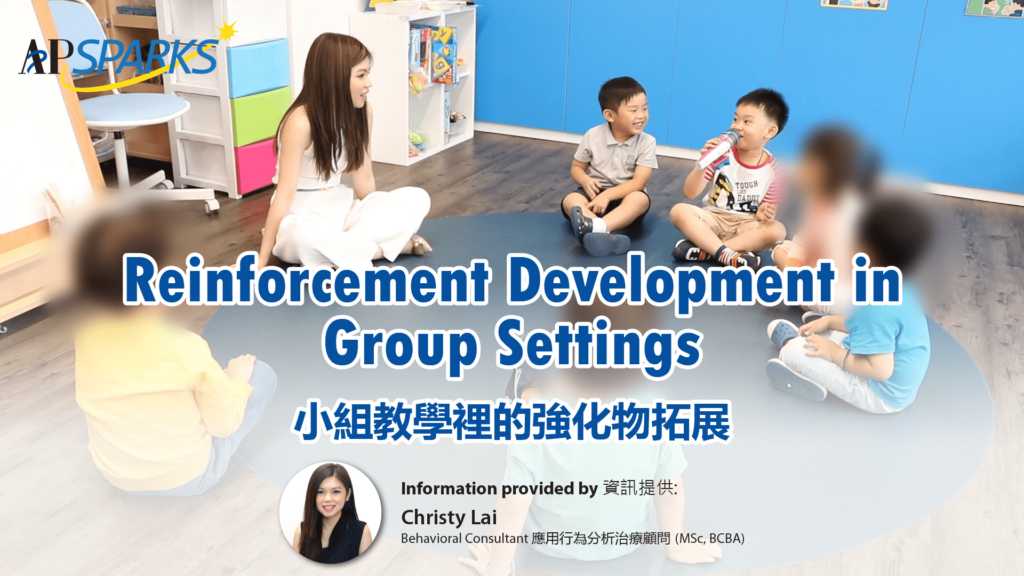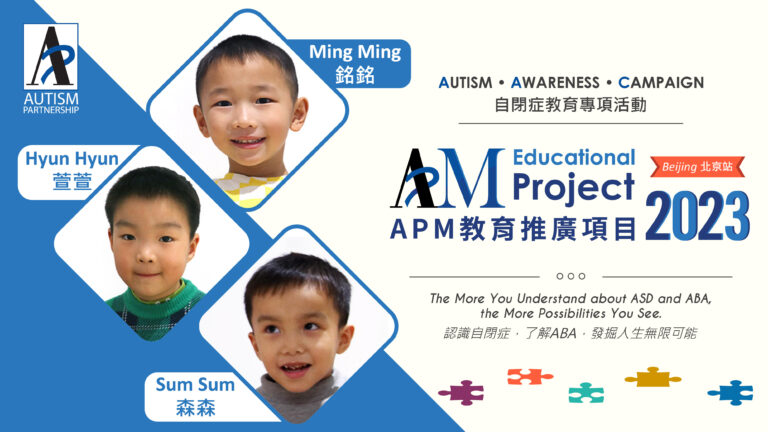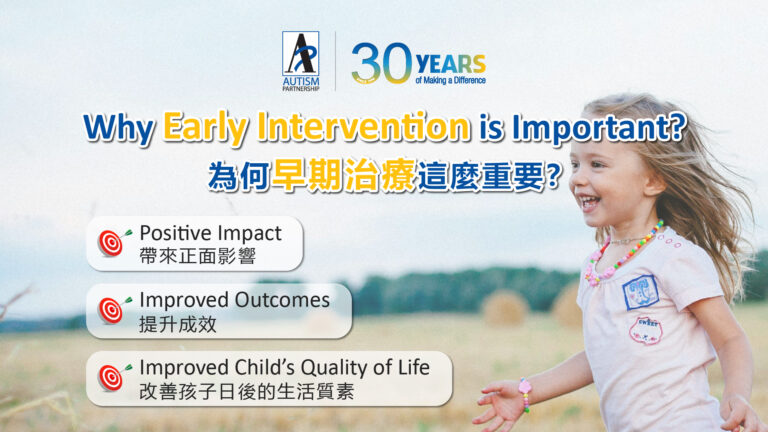
Learning motivation has a great impact on students’ learning progress in both one-to-one and group settings. In AP, we put huge emphasis on developing and expanding students’ interest on a regular basis. In one-to- one therapy, staff work very hard in expanding students’ interest in toys, activities and social reinforcement. However, it might not be sufficient for students to survive and remain motivated in group settings. Therefore, to prepare students to learn effectively in group settings, we aim at developing reinforcers that are commonly found and are accessible in a classroom setting. Below are some of the reinforcers that we teach and develop in our group programs:
In a kindergarten classroom, teachers often use social praise to reward students. These are not actual/ external reinforcers, like toys. Since students with ASD have challenges in social skills, they may not enjoy teachers’ social praise as much as typically developing children, or those social praise may not be strong enough to motivate them to pay the effort in trying hard. In AP’s group program, teachers choose social praise, often call-and response ones, that are commonly used in school settings. For example, teacher says, “Hip-Hip”, and students responded with “Hurray!”.

The teaching objectives of call- and- response social praise include
(1) Responding to the call- and- response instructions and
(2) Developing students’ interest and desire in earning social praise through group effect.
Typically developing children enjoy participating and winning in competitions。 They love to show off their skills and ability. At the same time, competition is a common element in a lot of children play or games. Therefore, through teaching the concept of competition, we would like our students to acquire
(1) the concept of winning and losing, and
(2) the enjoyment and desire in winning the competition. Some common competitions in our group include: running race, musical chair, competition tokens etc.
Getting a “Big Boy/ Girl” or “Role Model” badge, sticker, stamp or a star on the “Star of the Week” Chart are some of the common rewards that are used in a classroom setting. Students gain teachers’ and peers’ approval by demonstrating appropriate behaviors. These are the common behavioral management strategy that are used in classroom settings in helping students maintain their behaviors.
Being a teacher helper is a privilege. The teacher helper can be the person being in charge of giving out the worksheets or leading the line. These could be a task or demand for children with ASD. They may not see it as a privilege. Therefore, in our group program, teacher will expose and pair these special roles with appropriate behavior in order to increase their desire and interest in earning those privilege.

In group settings, there can be a lot of special privilege, for example, being able to choose or be chosen to do a certain thing first, like being able to line up, coming out to stick the poster or flashcard onto the whiteboard, or redeeming/ being able to exchange for a bigger reward, like participating in the “Star of the Week” party. Privilege can also be embedded reinforcement. Embedded reinforcement is relevant things that we provide/ allow the student to do to reinforce a certain behavior. For example, during story time, a student is being attentive, teacher reinforces his behavior by inviting him to come out and turn a page for the class. Another privilege that we use a lot in a group is “Social Party”. For example, teacher pick a song that all students like. Depending on their performance on their individual goal, whoever maintains their target behavior throughout the lesson gets to join the “social party”.
These are some of the common examples of reinforcement that we develop in our group program. Group learning has the advantage to allow teachers to develop group reinforcement through group effect and peers’ presence. Group reinforcement, like any other skills, require systematic planning and teaching. With a consistent and systematic approach, students with ASD are capable of developing desire and interest in reinforcers that are found and accessible in a natural setting.
Ms. Christy Lai is a Board Certified Behavior Analyst with a Master of Science in Applied Behavior Analysis from St. Cloud State University and a Bachelor of Arts in Psychology from the University of Michigan, Ann Arbor. Ms. Lai joined Autism Partnership (AP) in 2011 and she has extensive experience in working with children with ASD. Ms. Christy Lai currently take lead of the case supervision in the new established AP Beijing center. At the same time, she oversees the Little Learners program in Hong Kong and Shanghai and consults families in Asia. She directs overseas training to staff in the Train the Trainer program and provides parent education to families with children with ASD. She also conducts Jumpstart and PIIP programs locally and internationally. In additions, she is keen to take part in overseas ASD conferences and take lead of the design and production of AP teaching materials. Moreover, she helps with producing ABA training videos and articles in the APSPARKS website for public education.

Every little life is a special present for a family. From the time a baby is born, parents journey through lots of highs and lows, wishing for their child to grow up with a big smile, make great friends, find their own way in a job they love, and create a happy family. However, for […]

Autism Spectrum disorder can be diagnosed as early as 18 months. Research shows strong evidence on how effective Applied Behavior Analysis (ABA) can help children with Autism. It helps to deal with children’s challenging behaviors such as inattention, aggression, self-stimulation, etc. Howard, et al (2005) conducted a study to compare the effectiveness of 3 treatment […]

In today’s society where information flows freely, parents can easily receive different messages. However, these messages are often debatable or even wrong. Believing wrong information can easily lead to misguided choices and delay treatment, the consequences of which may last a lifetime. When conducting one-on-one consultations with parents, I often hear the following misguided views […]
Please share to let more people learn about ASD and ABA therapy:
AP holds the belief that with quality Autism Partnership Method (APM) treatment, individuals with autism should reach their fullest potential and achieve the greatest degree of independence and highest quality of life possible.

Sign up now to get ABA and Autism related news delivered to your inbox. Enter your email to get started
Hong Kong Center
Kowloon Center

All information received will always remain confidential. We will contact you as soon as we review your message. Thanks